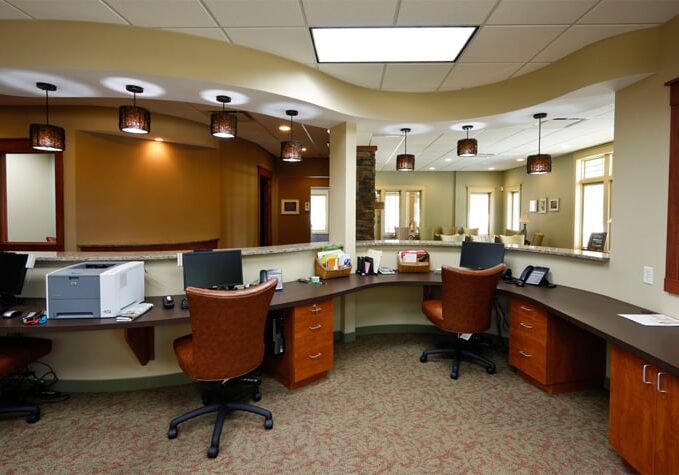
Dentistry has embraced technology in a big way. Digital X-Rays and impressions, intraoral scanners and cameras as well as digital shade-matching systems have become mainstream. The pace of innovation is sure to continue and it is affecting the patient experience in other ways too. If you are embarking on designing or renovating your dental office, you’ll want to give thought to how you incorporate technology into your design.
- Digital charting and complete electronic dental records are taking hold and replacing paper files, hastened by Medicaid policies taking effect this year. Converting a practice can be a big hurdle but many offices have gone paperless. In some parts of the country, an estimated 80% of practices are paperless or in the process of converting.
WHAT THAT MEANS FOR YOUR OFFICE DESIGN – If you go paperless, your office will no longer need to dedicate a large amount of space to storing and securing paper files. But you will likely need to create a station for patients to fill out electronic forms. Dentists also need to give thought to the furnishings and devices that facilitate accessing networked information in operatories, consulting rooms, private offices and administrative areas. This can mean a combination of desktops and tablets.
In addition, data security becomes paramount. Your office will need a secure space for network technology and ensure networked computers cannot be accessed by non-staff.
- You can increase patient satisfaction with technology. Many dentists offer patients entertainment in waiting rooms and during procedures including television and music. The proliferation of mobile devices in our personal lives mean that many patients appreciate having Wi-Fi, so adding a public network to your office is a nice touch. In practices with a lot of child and teen patients, gaming systems in their own nook win raves.
WHAT THIS MEANS FOR YOUR OFFICE DESIGN – To maximize the patient experience, mount televisions on the ceiling in operatories or position them in waiting rooms so that those who want to watch can do so but others can avoid the noise. If you have an open office, allow patients to individualize their audio through the use of headphones in operatories, which minimizes competing soundtracks and background noise. As a final comforting touch, some low-tech devices – such as latte machines and massaging chairs in waiting rooms — are also great ways to make patients happy.
